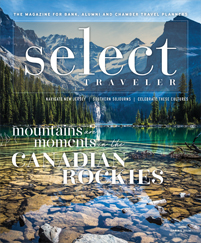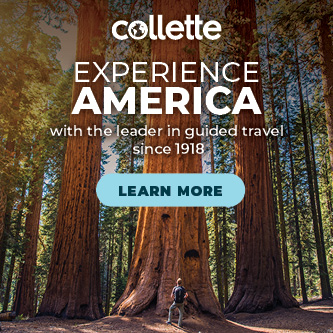It’s official: America is on its way to becoming a majority-minority nation.
The changing demographic and racial makeup of the United States will likely have profound impacts on politics, government, education, religion and more. And it could make a difference in the way affinity travel programs work as well.
Thanks in large part to immigration, the size of America’s white population is shrinking relative to its minority populations. Since 2010, there have been more black, Hispanic and Asian children born in the United States than white children. And most demographers project that whites will make up less than half of all Americans sometime in the next 50 years.
The growing populations of minorities also come with growing spending power. The children and grandchildren of immigrants tend to be upwardly mobile, and as minorities make greater strides in education and professional achievement, they will represent a larger economic force with greater disposable income.
For affinity travel planners at institutions such as banks, universities and chambers of commerce, diversity may seem like more of a theoretical idea that a practical concern. The constituencies for these organizations are often traditionally white and upper-middle class, and that population will continue to present profitable opportunities for years to come. But successful organizations have a way of adapting to resemble the communities around them. And for institutions seeking to build community engagement, reaching out to minorities could be a way to draw in new audiences.
Affinity travel can be one of the most efficient vehicles organizations have for reaching a more diverse customer base, as minorities in America often travel in groups at a higher rate than whites do. Loyalty program directors can leverage the power of travel to these ends by designing trips that are tailored to minorities in their community and actively reaching out to them in promotional efforts.
Luxury for African-Americans
Claire Soares is the poster child for the upwardly mobile, travel-loving African-American community. This millennial entrepreneur has been planning group trips since high school and launched her African-American-focused luxury travel company, Up in the Air Travel, in 2013.
“We felt like in the people-of-color space, there weren’t people talking about luxury travel,” Soares said. “There were a lot of people talking about budget travel, and that’s cool. But there are also people established in their careers that wanted to talk about luxury. I really want to center around luxury trips. We try to focus on places like Thailand and Egypt. Our approach is a really different dynamic than a traditional tour company.”
Up in the Air has a community of about 10,000 African-American travelers throughout the country who are willing to spend a lot of money for high-quality, high-touch trips. Soares loves to surprise guests with gifts such as personalized custom souvenirs and random business-class upgrades. And she sees a lot of growth potential in the high-end African-American travel market.
“There’s a book called ‘Black Is the New Green’ that goes over the spending of African-Americans, and it’s pretty extensive,” she said. “These people are typically very well rounded — they read from multiple news sources and listen to different types of music, and they represent a very specific spend. If you can tap into that makeup, African-Americans will spend more than any other demographic.”
But tapping into that market requires some insightful planning, Soares said.
“The thing that is so obvious but also so often missed is to make sure your advertising reflects people of color,” she said. “When we look at your marketing and your social media, if we don’t see a mixture of races, that’s not going to bode well for us wanting to book a trip with you.”
She also said that tour itineraries should include items that appeal to people of color. That doesn’t have to be limited to African-American historical sites, but it can include a broad range of interesting cultural items.
“In Cuba, for example, the traditional tour takes you to Ernest Hemingway places and other historic sites,” Soares said. “But if you’re African-American, you want to learn about the Afro-Cuban history and visit some of the different religious sites they have. You want to incorporate music and culture because music is a very big part of travel for African-Americans.”
‘Nobody Is Reaching Out to Them’
Hispanics, who are the fastest-growing population group in the United States, could represent a huge untapped potential for travel groups.
“The Hispanic market in the U.S. is growing and growing, but the travel opportunities aren’t really growing on par with the population growth,” said Olga Ramundo, president and CEO of the Miami-area agency Express Travel and an adviser on the Hispanic community to organizations such as NTA and the American Society of Travel Agents.
“There are studies that show that Hispanics are not cruising as much as the rest of the population. They’re not skiing on par with population growth. And that’s because nobody is reaching out to them. They’re not being sought after.”
That’s a big missed opportunity because Hispanics frequently travel in large family groups.
“It can be anything from eight people to 50 people,” she said. “It’s Mom, Dad, the kids, grandparents, aunts and uncles, and even the neighbors who feel like family.”
Many Hispanic groups will visit places of cultural or historical interest to them. That means Los Angeles, San Antonio and Miami, as well as international destinations such as Spain and Mexico.
But Ramundo said the destination is less important than the way the trip is structured and customized for Hispanic audiences. While these travelers don’t necessarily require tour guides that speak Spanish, they are looking for travel groups that understand their culture.
“A Hispanic tour never starts at eight in the morning — you have to start later,” she said. “And you never allot an hour for lunch at noon — you start at 1:00 or 1:30, and you allow more time for it.”
Ramundo said her children, who are now in their 30s and 40s, represent a promising demographic of Hispanic travelers.
“They’re Americans, born in the U.S., but they still have that Hispanic root and background,” she said. “They still observe our traditional holidays. And they travel in big, big groups with family members.”









